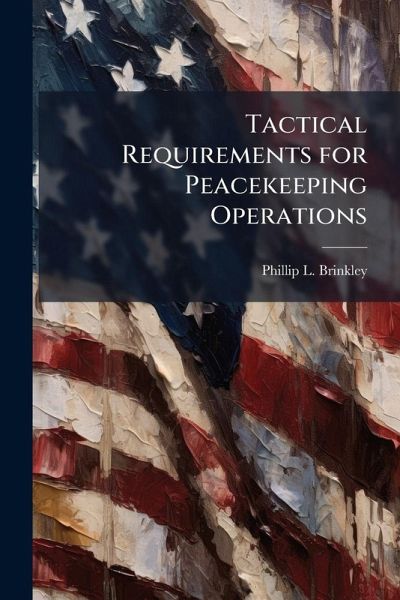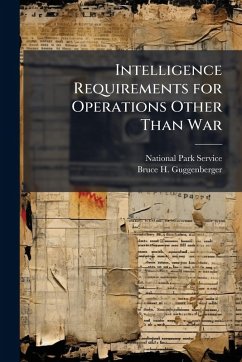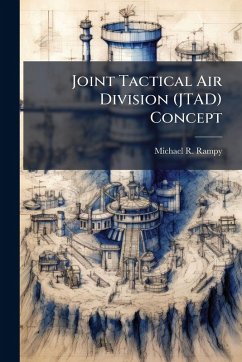
Tactical Requirements for Peacekeeping Operations
Versandkostenfrei!
Versandfertig in über 4 Wochen
16,99 €
inkl. MwSt.
Weitere Ausgaben:

PAYBACK Punkte
8 °P sammeln!
In the 1980's the United States Armed Forces have been involved in two peacekeeping forces, coupled with an extremely high rotation rate of personnel, caused each successive group to experience recurring valuable lessons. This study examines training requirements, principles of command and control, and organization for a U.S. light infantry unit involved in a peacekeeping operation. The focus is on the tactical level of peacekeeping, using the Sinai Multinational Force and Observers (MFO) and the Beirut Multi-National Force (MNF) as case studies. The study determines the component parts of a p...
In the 1980's the United States Armed Forces have been involved in two peacekeeping forces, coupled with an extremely high rotation rate of personnel, caused each successive group to experience recurring valuable lessons. This study examines training requirements, principles of command and control, and organization for a U.S. light infantry unit involved in a peacekeeping operation. The focus is on the tactical level of peacekeeping, using the Sinai Multinational Force and Observers (MFO) and the Beirut Multi-National Force (MNF) as case studies. The study determines the component parts of a peacekeeping force and analyzes the basis principles of successful peacekeeping operations. The monograph concludes that peacekeeping is a difficult military mission requiring professional personnel. The study states that peacekeeping forces must be highly trained soldiers who understand the nature and purpose of a peacekeeping mission. Finally, the study concludes that a peacekeeping force must have an internal chain of command. The most effective chain of command has one commander and one force headquarters responsible for the peacekeeping operation. This work has been selected by scholars as being culturally important, and is part of the knowledge base of civilization as we know it. This work was reproduced from the original artifact, and remains as true to the original work as possible. Therefore, you will see the original copyright references, library stamps (as most of these works have been housed in our most important libraries around the world), and other notations in the work. This work is in the public domain in the United States of America, and possibly other nations. Within the United States, you may freely copy and distribute this work, as no entity (individual or corporate) has a copyright on the body of the work. As a reproduction of a historical artifact, this work may contain missing or blurred pages, poor pictures, errant marks, etc. Scholars believe, and we concur, that this work is important enough to be preserved, reproduced, and made generally available to the public. We appreciate your support of the preservation process, and thank you for being an important part of keeping this knowledge alive and relevant.












